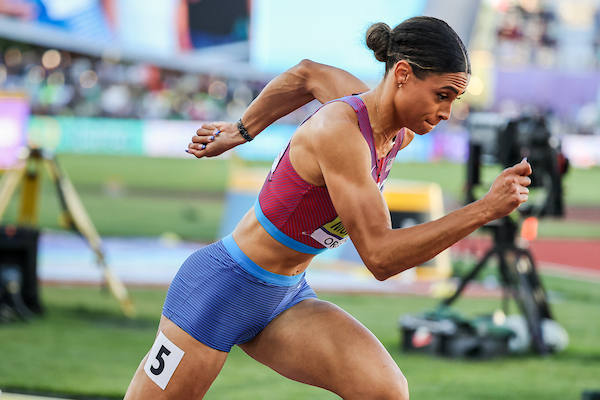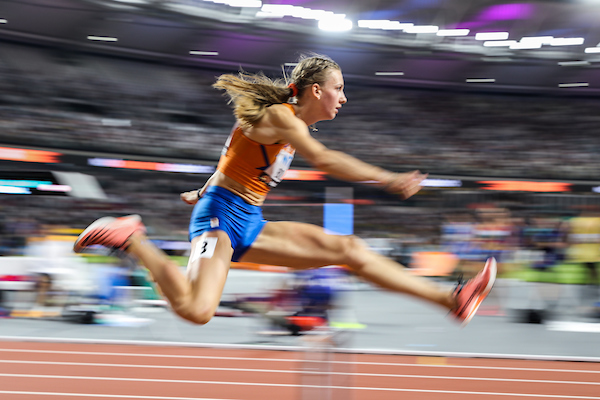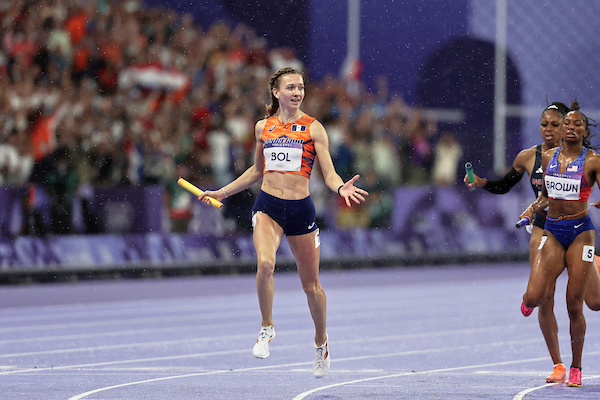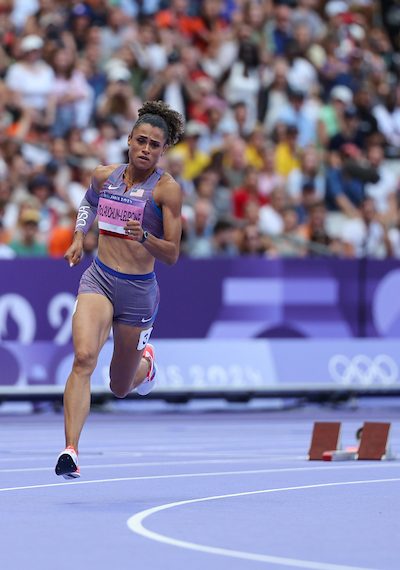The women’s 400m hurdles was built up as a race for the ages. Instead, Sydney McLauglin-Levrone set a new WR at 50.37, an incredible performance. Anna Cockrell ran her best race, running a brilliant 51.87. In third, Femke Bol, admitting a sub par race, fell apart over the last two hurdles, in 52.15.
Stuart Weir, our senior writer for Europe, tried to make sense of this curious race at the Stade de France.
Women’s 400h was an excellent performance but not a classic race.
There are moments when it is a privilege to be alive and a privilege to be in the Stade de France. The women’s 400m hurdles was such a moment. We got a stunning performance and a world record, but we did not get a great race. When Quincy Hall pipped Matt Hudson-Smith by 4 hundredths of a second in a race that saw three national records in the top four, one top coach asked if there had ever been a better 400m race. Sydney McLaughlin v Femke Bol had the makings of a similar confrontation, but for some reason, Femke Bol did not turn up.
McLaughlin-Levrone, who took nearly three-tenths of a second off the world record mark she set at the US trials in June, has run the fastest time in history in her last six major championship finals.

McLaughlin-Levrone’s comments after the race included: “I’m just grateful for the opportunity to be healthy and to have come out of it in one piece. Grateful to God for this opportunity grateful to celebrate my 25th birthday like this. There was a lot of anticipation leading up to this race, but I’m just grateful for all that has happened. Overall, it was a pretty good race. Every race is against 10 hurdles. Some people will push you, but it doesn’t matter if you don’t focus on the barriers before you. This is a once-in-a-lifetime opportunity to run in the Olympics. It’s exciting, but you also want to put your best foot forward.”
“There’s no such thing as a perfect race, but the closer and closer we can get to 49 seconds, I feel like it’s inching there. There are a few things that I feel I could have cleaned up. But when you’re in the moment, you’re not thinking about all that. I’m sure Bobby (Kersee, her coach) will have some notes for me. Just becoming more familiar with the race, with so many ways you can run it; there are many different ways to get better. Between stride pattern, touchdown time, and flat speed, it’s always trying to improve those things. It’s also just building that capacity in your legs to handle going that fast for that long.”
All I have seen that Bol said was: “All you want to do in an Olympic final is to put up your best race. I screwed it up. I’m not sure where I made the mistake. I just got so much lactic acid with 300m to go. I’m not sure why; I really have no explanation. This is just a bad race. I’ll look at the positives, I’ll talk to my coach, I’ll try to enjoy the bronze.”

The contrast between the two and their attitude to competition could hardly be more significant. This year, outside of the US trials and the Olympics, Sydney has run just one 400-hour race and 5 other races. In contrast, Femke ran ten times indoors and 15 outdoors before the Olympics – including World Indoors, European Championships, World Relays, and London and Stockholm Diamond Leagues. Bol also anchored the Netherlands to victory in the Olympic mixed relay this week. Were those extra races in her legs a significant factor?

This is also a suggestion that Femke may have tried too hard to match Sydney’s start and tightened up. Another analyst whose views I respect said it is hard to challenge Sydney by running more races. It is always tough to run against an opponent who seems to have the upper hand.
And finally, if you wondered what Sydney’s plans were for LA 2028, we can reveal her response: “I have no idea. I know that today is Thursday, and tomorrow is Friday.” You heard it first on RunBlogRun.
,
Author

Since 2015, Stuart Weir has written for RunBlogRun. He attends about 20 events a year including all most global championships and Diamond Leagues. He enjoys finding the quirky and obscure story.
View all posts






















